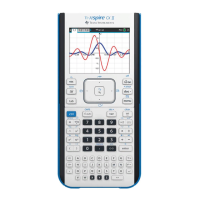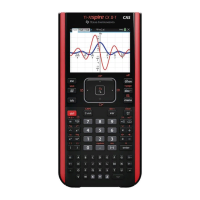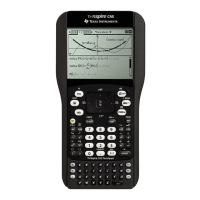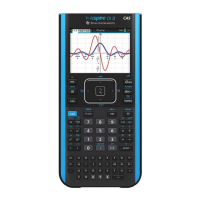230 Using Lists & Spreadsheet
This test is useful in examining whether the confidence interval
associated with a confidence level contains the value assumed in the
hypothesis. Like the z Interval, this test helps you determine how far
from a population mean a sample mean can get before indicating a
significant deviation when the population mean is unknown.
2-Sample z Interval (zInterval_2Samp)
2-Sample z Interval (two-sample z confidence interval) computes a
confidence interval for the difference between two population means
(m
1
Nm
2
) when both population standard deviations (s
1
and s
2
) are
known. The computed confidence interval depends on the user-specified
confidence level.
This test is useful in determining if there is statistical significance
between the means of two samples from the same population. For
example, this test could determine whether there is significance between
the mean SAT score of female students and the mean of SAT score of
male students at the same school.
2-Sample t Interval (tInterval_2Samp)
2-Sample t Interval (two-sample t confidence interval) computes a
confidence interval for the difference between two population means
(m
1
Nm
2
) when both population standard deviations (s
1
and s
2
) are
unknown. The computed confidence interval depends on the user-
specified confidence level.
This test useful in determining if there is statistical significance between
the means of two samples from the same population. It is used instead of
the 2-sample z confidence interval in situations where the population is
too large to measure in order to determine the standard deviation.
1-Prop z Interval (zInterval_1Prop)
1-Prop z Interval (one-proportion z confidence interval) computes a
confidence interval for an unknown proportion of successes. It takes as
input the count of successes in the sample x and the count of
observations in the sample
n. The computed confidence interval depends
on the user-specified confidence level.
This test is useful in determining the probability of a given number of
successes that can be expected for a given number of trials. For instance,
casino examiners would use this test to determine if observed payouts for
one slot machine demonstrate a consistent pay out rate.

